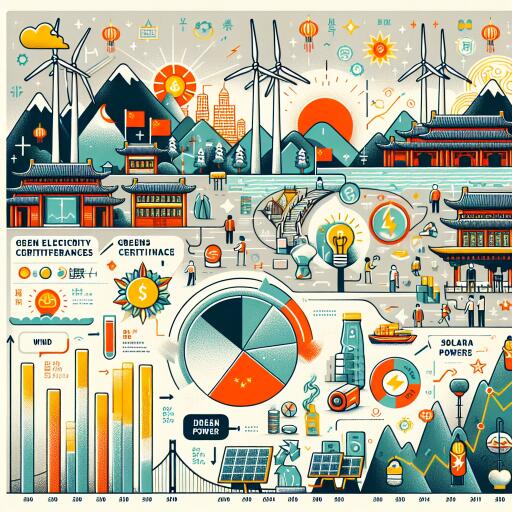
Exploring the Impact of China’s Green Electricity Certificates on Renewable Energy Consumption
In a significant move towards bolstering its renewable energy market, China’s National Energy Administration has recently updated the framework for the issuance and trading of Green Electricity Certificates (GECs). This strategic development aims to enhance transparency in the GEC accounting process, thereby making the renewable energy market in China more robust. It’s an essential step for the nation as it seeks to elevate its consumption of renewable energy sources domestically.
Green Electricity Certificates in China, serving as proof of electricity generated from renewable resources, represent 1,000 kilowatt hours of renewable electricity. Introduced in 2017, these certificates have allowed renewable energy producers to augment their revenue by selling GECs alongside their electricity. The demand for GECs has primarily emanated from consumers eager to showcase their commitment to decarbonization and from those mandated to fulfill renewable energy quotas set by legal requirements.
The recent policy update mandates disclosure of transaction histories and participant identities within the GEC market. This policy aims to elevate the quality of data regarding renewable energy production and consumption, ensuring more rigorous management of such data.
The push for GECs began to gain momentum in August of the previous year, following the National Energy Administration’s issuance of new guidelines, which expanded the eligibility of renewable energy producers for GECs. These changes have established GECs as the cornerstone for certifying renewable generation in China, indicating a robust strategy to embed these certificates deeply into the nation’s energy transition landscape.
China’s ambitious climate goals, including reaching peak CO2 emissions by 2030 and achieving carbon neutrality by 2060, have set the stage for an accelerated expansion in renewable energy infrastructure. With targets to install 1,200 GW of wind and solar capacity by 2030, China is already on track to surpass these goals well ahead of schedule, with current installations poised to cross the 1,200 GW mark by the end of 2024.
However, the surge in renewable energy capacity has not been matched by equivalent growth in renewable electricity consumption, leading to an uncomfortable reliance on coal-fired electricity. Despite the substantial increase in the share of wind and solar in China’s total generation capacity, the actual generation from these sources has not kept pace, particularly in regions heavily investing in renewable infrastructure like Xinjiang.
This scenario highlights the challenges posed by the intermittent nature of renewable sources and the current structure of China’s electricity sector, which has not fully transitioned to a competitive market model. Although renewable electricity’s competitiveness due to lower costs should theoretically increase its market share, the transition to a market-driven energy sector remains gradual.
Herein lies the significant role of Green Electricity Certificates. As the sole means of certifying renewable electricity production and consumption, GECs are vital for legitimizing China’s renewable energy consumption efforts. They serve as an essential tool in the transition towards a market-driven energy economy and the broader goal of decarbonization.
With the latest policy updates and as China nears its capacity targets for renewable energy, the significance of GECs in facilitating increased consumption of renewable electricity cannot be understated. They stand as a critical mechanism in China’s ambitious journey towards a sustainable energy future, demonstrating a nuanced approach to encouraging renewable energy adoption and ensuring energy security.





Leave a Reply